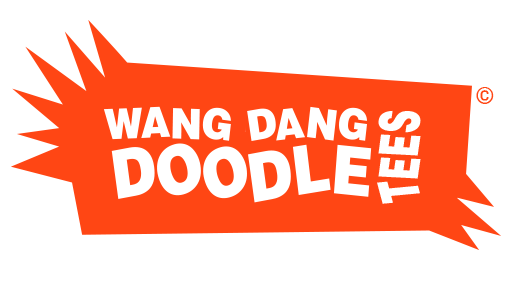To Screen Or Not To Screen?
Which printing process is right for you
As a child of the 1970s I grew up with two kinds of printing when it came to t-shirts. There was screen printing, which was the process of making silk screens and pushing ink through the clear spaces in the screens onto the shirts and repeating for each color. Or there were iron-ons, which sometimes came in cereal boxes or something and were generally very poor quality.
A lot has changed since the 1970s.
Now there is a process called Direct-To-Garment (DTG) printing that can print full-color designs directly onto a shirt all at once (rather than one-color at a time) using digital technology. Vibrant full color photography and complex color gradations can be achieved.
High quality DTG printing is a real game changer in the world of online retail. It allows for unlimited colors and creativity and eliminates the need for maintaining an extensive inventory of screens because it can be done “on-demand” using digital files. Screen printing requires an actual screen for each color that needs to be created and then the ink is usually applied by hand on presses. It’s a much more labor intensive process so it is not conducive or affordable for small orders or on-demand services.
In DTG printing the ink is water based and is treated after it is applied so the color is absorbed into the fabric and is softer to the touch. In screen printing, a plasticol ink is used that is thicker and is therefore often associated with a better quality print. Screen printed shirts will last for many years with limited cracking. DTG printing also lasts for years with minimal fading or cracking. So which printing process should you use? Let me help you figure it out.
When To Consider Screen Printing
For Bulk Orders 150+
The average cost per screen is usually around $20 and each color on each design needs it’s own screen, so if you have small orders that have multiple colors (or front and backs) the screen charges can really add up. A shirt that may cost $8 to print may end up being $12+ when you add in the screen charges. The larger the order the less the screen charges affect the bottom line/cost-per-shirt. There are no screen charges when you use DTG printing.
For Single Color and/or Simple Designs
If you are doing a one-color print, or a multi-color design that has no gradations or photography, then screen printing may be a good solution because the plasticol ink is durable and vibrant. Keep in mind the screen charge(s) will add to the total cost.
When To Consider DTG Printing
For Photo-Realistic or Complex Multi-Color Designs
Full color printing is achievable without making and storing screens, so literally anything can be printed in vibrant color with no additional screen charges. There is no limit to the colors you can print.
For Small Orders or Samples
If you are interested in having a small number of shirts available for sale at events instead of carrying a heavy box of merchandise around, then DTG is perfect. There is no minimum order so you can simply get a few examples and use a QR code sign to encourage fans to find their favorite style and design on your store page.
So which is best for you?
It really comes down to the type of design you have and the quantity you need. If you have a design with one or two colors and you need a lot of them, you can’t really go wrong so either is fine, and it’s easier to find screen printers than DTG printers. If you have a design with lots of colors or photography and/or you don’t want to get that many, then DTG is a great option.
At Wang Dang Doodle Tees we use both printing methods. For online orders we use direct-to-garment printing. For bulk or wholesale orders we find the best, most economical option based on the complexity of the design and the quantity. For musicians that sell merchandise on our store we recommend keeping a smaller amount of shirts on hand since there are no minimum orders. We supply flyers and signage with QR codes to the store pages with a wider array of styles and design options.
